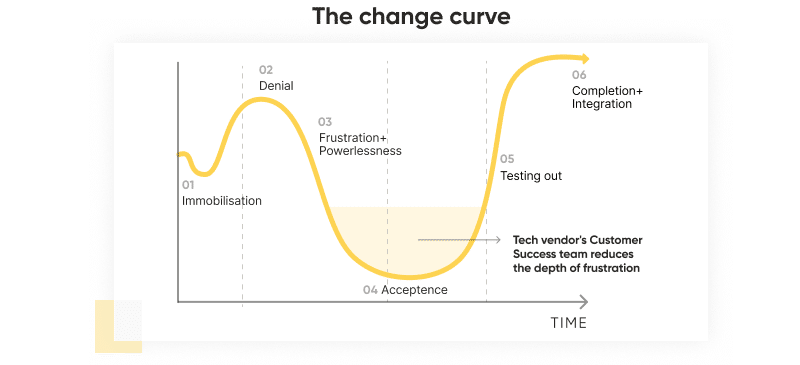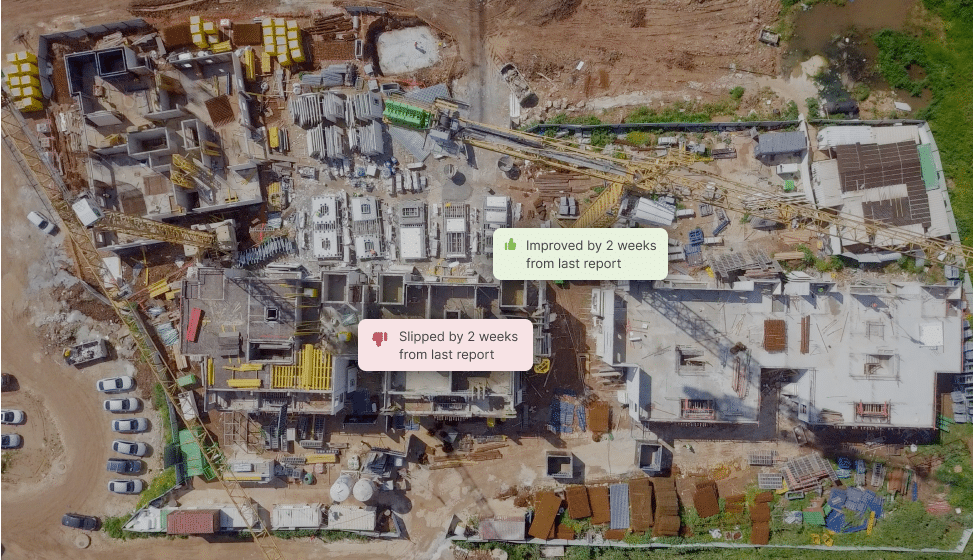Navigating Change 8 essential strategies for construction industry leaders

“Change is inevitable. We all know that. The rate of change within the construction sector is not going to slow down any time soon. It will accelerate,” states Andy Steele, Chief Strategy Advisor at Buildots, when discussing the urgent need for effective change management in the construction industry.
Across industries, change management may be defined as supporting people, teams, and companies to transition to new ways of working. From evolving market conditions and climate factors to organizational and technological transformations, the ability to adapt and navigate change is a crucial skill. In construction, this involves integrating new technologies, innovative tools, altered processes, and workflows into established routines without disrupting ongoing projects. Steele emphasizes, “It's about guiding people through the change” by providing them with the necessary tools and support. Most essential is continuously communicating the benefits, steps, and objectives of that change across all levels of the company.

Construction: Between innovation and tradition
The construction industry has historically been slow to change. According to a McKinsey report, the sector remains lagging compared to others. It accounts for 13 percent of global GDP, yet it has experienced a mere 1 percent annual productivity growth over the past twenty years. Time and cost overruns are common, and overall profits are only about 5 percent, despite the industry's substantial risks.
The report cites the complexity of construction projects which involve multiple phases and numerous stakeholders, making innovation a challenging task for construction professionals: “Companies prefer to stick to safer options rather than adopt transformative changes, especially when the stakes are high – such as in multi-million dollar projects”. In such a high-risk environment, it is daunting to try out new methods of operation, or as Steele puts it, to conduct controlled experiments: “As an industry, we're behind others, that is in no doubt. But the speed is picking up – and once we start, the change will be drastic.” In order to get there, Steele stresses the need to find “quicker, better, more Lean and productive and less wasteful ways to operate.”
Advancing beyond apprehension: A strategic approach is crucial
Building Information Modeling (BIM), Artificial Intelligence, IoT, laser scanners, and automated AI progress tracking are all rapidly changing the way construction professionals operate. Several shifts will fundamentally alter the way construction projects are managed and executed, following trends seen in other industries, and are poised to overhaul the entire value chain. “Fundamental changes usually impact each and every level of the organization. And they follow a very universal pattern: Enthusiasm/shock at first, then apprehension/fear, understanding the personal benefit/impact, and finally full adoption”.

The Change Curve is a popular model to illustrate the distinct stages individuals, groups and organizations typically go through over time when a change occurs. In order to navigate those stages effectively and advance past the stage of fear and resistance, a well-defined strategy must be put in place, including critical milestones shaping that path to full adoption. Strong leadership becomes especially important when transitioning from the stage of “fear” or general resistance toward “personal benefits.” According to Andy Steele, there are eight crucial rules for successful change management:
- Create a sense of urgency: By emphasizing a compelling reason and giving a deadline for the upcoming change. “Without urgency, any initiative will lack momentum.”
- Build a coalition: Forming a team of influential stakeholders to drive the change. “It's essential to have more than one person championing.”
- Develop a clear vision: Clearly articulating why the change is necessary and what it aims to achieve. Without a transparent, achievable vision, people won't commit.
- Communicate consistently: Regularly detailing the vision and its progress as well as setting up a Plan B to mitigate potential risks. A universal buy-in needs constant reminders, reassurance, and transparency.
- Remove obstacles: Identifying and eliminating barriers that hinder the change. Whether those are technical issues, skill gaps or a lack of infrastructure – addressing them, yet not being intimidated by these obstacles is crucial. This is where the Customer Success teams of the tech solution you are implementing are essential: They act as guides, ensuring all stakeholders are set up for success from day one and provide a soft landing ground to each client individually.
- Generate small wins: Setting achievable short-term goals that demonstrate the benefits of the change. These smaller wins motivate the team and help them comprehend the personal benefits and direct impact of the new solution introduced.
- Avoid declaring victory too soon: Continuously reinforce the change until it's fully integrated. Don't assume the change is complete after a few first successes.
- Anchor the change: Ensuring new processes are embedded into the company’s organizational culture. Setting up regular reviews, metrics, feedback rounds and consistent training make changes sustainable – and lead to continuous improvement in the long run. In construction metrics indicating a successful adoption can potentially be less delays, fewer return visits, improved PPC performance or fewer incompletions.
Charting the course ahead
“We need to be better at driving change; there’s no way around it,” Steele concludes. Creating excitement instead of fear around the word of change is essential. The practice of change management in the construction industry will become even more crucial as the pace of technological innovations accelerates.
Companies that embrace these principles and map out clear methods for managing change will be better positioned to adapt to capitalize on emerging opportunities. As the industry evolves, it will be those who have managed change effectively that will be setting better standards for efficiency and productivity.



